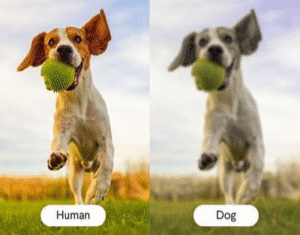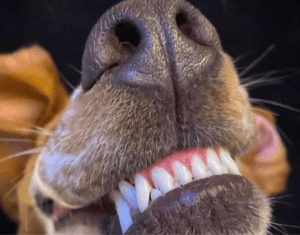I’ll never forget the day I met Koby. He was a wobbly, underweight puppy with eyes too big for his tiny frame. His owner had no idea what was wrong, just that he wouldn’t eat, and his diarrhea had an unmistakable, foul odor. I knew right away: it was canine parvovirus, or parvo, as it’s commonly called. And it broke my heart.
Parvovirus is one of the most dangerous and contagious viruses affecting dogs, especially puppies. It attacks rapidly dividing cells, primarily targeting the gastrointestinal tract, leading to severe vomiting, diarrhea, lethargy, and dehydration. Without prompt treatment, it can be fatal within days.
Innehållsförteckning
The good news? Parvo is preventable. Förståelse how dogs get parvo, how it spreads, and what you can do to protect your furry companion is the first step toward keeping them safe.
How Do Dogs Get Parvo?
Parvovirus is like glitter at a kid’s craft party. It sticks to everything and refuses to go away. The virus spreads through several common routes, and once it’s present, it can be incredibly difficult to eliminate from the environment.
1. Direct Contact with an Infected Dog
Dogs shed the parvovirus through their feces, and even the tiniest, invisible amount can spread the disease. If a healthy dog sniffs, licks, or plays with an infected dog, they are at risk of contracting the virus.
2. Contaminated Surfaces and Objects
Parvo isn’t just in feces; it lingers on almost every surface an infected dog touches. The virus can survive on:
- Dog bowls
- Collars and leashes
- Kennels and bedding
- Toys
- Floors, sidewalks, and grass
Once introduced to an area, parvo can survive for months, even up to a year, waiting for the next unsuspecting pup to come along.
3. Human Carriers
Did you know that humans can unknowingly bring parvo home? If you’ve been near an infected dog—whether at a shelter, park, vet clinic, or even a friend’s house, you can carry the virus on your hands, shoes, and clothes. While the virus won’t harm humans, it can easily transfer to unvaccinated dogs in your household.
4. Exposure Through Public Spaces
Dog parks, pet stores, dog-friendly cafés, and training facilities are high-risk areas for parvo, especially if other dogs frequent them. If an infected dog has been there, the virus is likely lurking on the ground, waiting to infect another pet.
5. Unvaccinated Dogs
This is the number one risk factor for parvovirus. Puppies that haven’t completed their full vaccination series (usually given at 6, 8, 12, and 16 weeks) and adult dogs with outdated vaccines have zero protection against the virus.
What Are the Symptoms of Parvo in Dogs?
Parvo symptoms typically appear 3-7 days after exposure. The virus acts fast, so recognizing early signs can mean the difference between life and death.
Early Symptoms:
- Lethargy – Your dog may seem unusually tired or uninterested in food and play.
- Aptitlöshet – They refuse meals and treats.
- Fever or low body temperature – Some dogs run a high fever, while others become dangerously cold.
Advanced Symptoms:
- Severe vomiting – Continuous vomiting leads to rapid dehydration.
- Bloody, foul-smelling diarrhea – The virus destroys the intestines, leading to bloody stool with a distinct, overpowering odor.
- Extreme weakness and dehydration – Without fluids, dogs quickly deteriorate.
Parvo is often fatal if not treated quickly. If you notice any of these symptoms, get to a vet immediately. Early intervention is critical.
How to Prevent Parvo: Protecting Your Dog
1. Vaccinate, Vaccinate, Vaccinate
Den parvo vaccine is the best protection against the virus.
- Puppies need a series of vaccinations starting at 6 weeks and continuing every 3-4 weeks until at least 16 weeks.
- Adult dogs should receive booster shots every 1-3 years to maintain immunity.
- If you adopt a dog, confirm their vaccination history before bringing them home.
2. Avoid High-Risk Areas
Until your puppy is fully vaccinated, keep them away from dog parks, pet stores, and heavily dog-populated areas. Parvo thrives in these environments. If you must take your puppy outside, use a protective pet carrier like the Sherpa Travel Carrier to minimize ground contact.
3. Practice Good Hygiene
- Disinfect surfaces with pet-safe disinfectants to kill the virus.
- Wash hands and change clothes after handling unknown dogs.
- Use separate food and water bowls for new or visiting dogs.
- Clean shoes with disinfecting wipes after visiting public pet spaces.
4. Keep Your Home and Yard Clean
If you’ve had a dog with parvo in the past, you need to deep clean your home and yard before introducing a new dog. Parvo can survive for months, even in soil.
5. Monitor Socialization
If you’re bringing a new puppy or rescue dog into a home with other dogs, ensure all pets are fully vaccinated before introductions.
Viktiga slutsatser
- Parvo spreads through infected feces, contaminated surfaces, human carriers, and public spaces.
- Unvaccinated dogs are the most vulnerable. Puppies without full vaccination have no protection.
- Symptoms include vomiting, bloody diarrhea, lethargy, and loss of appetite. Immediate veterinary care is essential.
- The virus can survive for months. Thorough disinfection is required to eliminate it from your home.
- Vaccination is the best defense. Puppies need a full vaccine series, and adult dogs require boosters.
- Avoid exposure in public spaces. Limit contact with unknown dogs until your pup is fully vaccinated.
- Early action saves lives. If you suspect parvo, act fast—every hour counts.
FAQs
Can Adult Dogs Get Parvo?
Yes, while puppies are at the highest risk, unvaccinated adult dogs can still contract and spread parvo. Even vaccinated dogs can carry and shed the virus without showing symptoms.
Can Humans Spread Parvo to Dogs?
Människor cannot catch parvo, but they can spread it. The virus can cling to shoes, clothing, and hands, allowing it to travel from infected environments to your home.
How Long Does Parvo Last in the Environment?
Parvo is extremely resilient:
- Soil & grass: Over one year
- Hard surfaces (floors, kennels, toys): Months
- Cold weather: Helps the virus survive even longer
What is the Survival Rate for Dogs with Parvo?
With immediate veterinary care, survival rates can be 85-90%. Without treatment, mortality rates are as high as 91%. Early action is critical.
Can a Dog Get Parvo Twice?
Once a dog recovers from parvo, they typically develop long-term immunity. However, a weakened immune system can make them susceptible to other infections.
Does Bleach Kill Parvo?
Yes, diluted bleach (1 part bleach to 30 parts water) is one of the few disinfectants proven to kill parvo on hard surfaces. Use pet-safe disinfectants for areas where dogs eat, sleep, and play.
Can My Dog Get Parvo From a Vaccinated Dog?
While vaccinated dogs are protected, they can carry the virus on their fur, paws, or saliva. This is why keeping unvaccinated puppies away from public spaces is crucial.
Final Thoughts: Prevention is the Best Cure
I wish I could say Koby made it, but parvo is ruthless. His owner didn’t know the risks, and by the time they sought help, it was too late. But your dog doesn’t have to go through that.
Den simple act of getting your dog vaccinated can mean the difference between life and death. Stay educated, take precautions, and make sure your furry companion stays healthy and protected.





